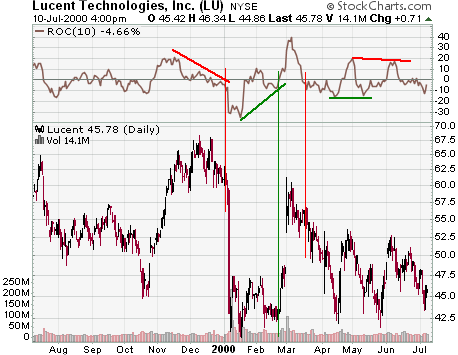|
Rate of Change |
| Introduction and Calculation |
The Rate-of-Change (percent) is a very simple yet effective momentum oscillator that measures the percent change in price from one period to the next. ROC calculation compares the current price with the price n periods ago. For example, a 10 period rate of change would be calculated as follows:
ROC = 100 * (Today's close - Close 10 periods ago) / (Close 10 periods ago)
The plot forms an oscillator that fluctuates above and below the zero line as the rate-of-change moves from positive to negative. The oscillator can be used as any other momentum oscillator by looking for higher lows, lower highs, positive and negative divergences, and crosses above and below zero for signals.
| Example |
Lucent

The chart of Lucent shows that a large negative divergence formed in Dec-99 and the ROC moved into negative territory just before the large decline. While this was a superb sell signal, the ROC can produce whipsaws as it moves above and below zero. As with most technical indicators, ROC should be used in conjunction with other aspects or technical analysis as well as other non-momentum based indicators.